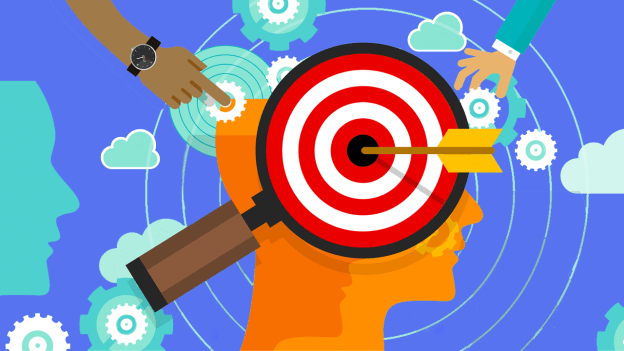These are the tools accelerating L&D strategies on future readiness

DecodeTalent Read similar articles

A recent survey on future-readiness of HR by KMPG showed that 70 percent of HR executives recognized the need for workforce transformation that included new skills and processes. But at the same time, only one in three, that’s about 37 percent of them said they were “very confident” about HR’s actual ability to transform and move them forward. This disconnect between future goals and the current skills can prove to be costly as the future of work becomes increasingly digital,
HR teams resort to a number of measures to identify training needs of employees. Speaking about some of the methods, Vinod Kumar, Global Head of Human Resources at Greenlight Planet said that the company engages in “focus group discussions, runs learning analysis surveys, engages in skill share sessions and then the L&D team builds short, medium and long term goals”
One of the first steps in identifying the future roadmap on skills is to understand where you are currently. Whether reviewing a potential candidate for a new job role or identifying possible focus areas for employees to upskill themselves, knowing where they currently stand, can help you gain greater clarity in identifying not just the skills and competencies that are required but also ‘who’ needs to be upskilled for ‘what’.
The role of learning agility and proximity testing
Before identifying specific technical skillsets that are needed on the job, it is important to identify which of your employees is ready to learn and which of them is closest to the skills that are needed to fulfill your strategic goals.
What is learning agility?
“Learning Agility is the ability to continually and rapidly learn, unlearn, and relearn mental models and practices from a variety of experiences, people, and sources, and to apply that learning in new and changing contexts to achieve desired results,” said Siddharth Gupta, CEO, Mercer Mettl.
Is the employee oriented to learn? What is the individual’s propensity to learn new things faster? Testing employees on behavioral attributes such as open mindedness, inquisitiveness, mastery etc., can identify the right employee you need to invest in.
The second aspect that’s critical to assess is the proximity of the employee to the desired skillset. Which among your employees can pick up a new technical skill, which of them can learn the skill fastest based on the current stack of skills they already have?
Technology tools are capable of assessing your employees on both, learning agility as well as on proximity. Leveraging custom assessments that are tailored to your business context and testing for skills needed to execute your projects will enable teams to succeed.
“Understanding which of your employees is best placed to skill themselves – both from a learning readiness perspective as well as from a knowledge perspective will help drive effectiveness in learning. From a cost perspective, it is saves precious time and training costs,” said Siddharth.
Leveraging holistic assessments tools
There are different ways to conduct a skill gap analysis – including behavioral, cognitive and technical. Depending on the level of expertise and depth required, a combination of assessments can be employed to assess a candidate.
Psychometrics
Understanding personality types and behaviors can help you identify the right person for the job. And assessing personality traits can help you gain insights into whether an individual fits into the workplace culture, is trainable. And to understand the capability and drive they can bring to perform their work.
Psychometric tests measure four key traits: 1) Positive personality traits, 2) Negative Personality traits, 3) Motivations, values and preferences and the 4) Cognitive ability – an individual’s capacity to think logically and analyze.
360-degree tools
Another way to assess candidate readiness to simply ask the employee’s peers, direct reports and the manager.
“Constructive feedback from one another facilitates employees to align each other to the overall business objectives and managing of people. In this endeavour, the right balance and constructive feedback can be maintained when it is given from all stakeholders of an employee,” said Shiraz Latiff, CEO, Hummingbird International
Companies also use a combination of assessments and 360 degree feedback tools to help understand the skills and competencies needed at work. Whether it’s performance assessments, training need identification or succession planning, 360 degree tools provide insights into hidden strengths, possible blind spots and areas of opportunities in a way that regular assessment.
Aptitude and technical knowledge
Whether it’s to understand which of your employees ranks high on fluid reasoning (the ability to perceive things and absorb new information) and crystallized reasoning ( the ability to retrieve or use information acquired over a lifetime/ use of pre-acquired knowledge), or to understand the specific skillset within a technology skill, aptitude tests help understand can perform tasks required on the job.
Is the employee able to make decisions based on observed data and experience? Are they able to deal with ambiguity and make intelligent decisions?
Simulation tools and live projects
Simulation tools like Basic Coding, Database Simulator, R Simulator, Full Stack Simulation can not only help understand the thought process of the individual, it can also help observe how the person would respond in a live situation. Simulations can help practice and learn from a given situation apart from assessing the candidate.
Another method of enabling people to succeed is to engage them in live projects. Vinod from Greenlight Planet said that the company engages their high potentials in “action learning projects – which helps them work together, collaborate with a mentor to complete the task at hand”
Once employees undergo one test or a combination of these tests, a learning roadmap can be aligned by taking into account the skill gap. In order to make sure that the learning course has been effective, candidates can once again take the assessment post learning.





